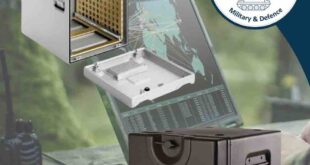Jonathan Wilkins explains why the obsolescence risk of commercial off-the-shelf products (COTS) is just as prevalent today as it was during Concorde’s era
2019 marks 50 years since the launch of Concorde. The British-French turbo-powered airliner seated up to 128 passengers and had a maximum speed over twice the speed of sound.
Concorde was certainly ahead of its time, but some of the problems its designers encountered still exist today, such as those encountered when using commercial off-the-shelf products (COTS).
The obsolescence risk of using COTS is a recurring problem for military and commercial aerospace manufacturers. In fact, it’s estimated that 60% of the integrated circuits currently used in aerospace products will be obsolete in the next five years.
The production cycles of today’s components are far too short to support aerospace products, whose lives regularly exceed over 30 years.
The reason COTS are so popular is that they offer military and aerospace system designers access to low-cost alternatives to full mil-spec parts.
While these commercial products have not been specifically designed for this market, they do reduce time to market and production costs.
When considering whether to use COTS in design, manufacturers should think about the product’s performance requirements.
For example, if the environment will be particularly demanding, such as the need to operate under high humidity or extreme shock and vibration, relying on COTS is not a viable option, as these parts are not designed for such extreme conditions.
As obsolescence is such a major concern, why did manufacturers use COTS in the first place? In the past, military components were in production for several decades, so obsolescence was never an issue.
However, most of today’s commercial parts are in production for five years or less and this lifespan is continuing to shrink.
Take a graphics processor used in an aircraft display as an example. This type of technology is currently being redesigned, on average, every eleven months to keep up with changing demand. This results in frequent design changes, which all require recertification.
Not only does this create additional work for design engineers, it also leads to a shortage of replacement components to support repairs.
The obsolescence risk associated with COTS is easier to manage when it’s considered in the product design stage. The timing of specific component redesigns cannot be predicted, but design engineers can anticipate general trends.
For example, a well-known principle of semiconductor products is Moore’s Law, which states that the number of transistors in a dense integrated circuit doubles every two years.
Considering this at the design stage allows aerospace manufacturers to take advantage of newer technologies, without having to redesign an entire product.
So, what happens if a product is passed the design stage? Thankfully, there are fixes at every stage of production that can prevent a product from having to be completely redesigned. For example, industrial parts suppliers like EU Automation stock parts that have been made obsolete, so manufacturers don’t have to replace an entire system.
Concorde may have completed its final journey in 2003, but the race is by no means over. New technology has opened up exciting possibilities for super-fast air travel, like that provided by Concorde. Will it be that we always rely on COTS to get us from A to B?
Jonathan Wilkins, director of obsolete industrial parts supplier EU Automation.
 Engineer News Network The ultimate online news and information resource for today’s engineer
Engineer News Network The ultimate online news and information resource for today’s engineer





